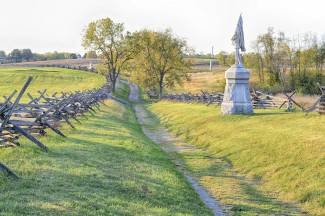
Johns Hopkins UniversityEst. 1876
America’s First Research University
Maryland: A History

In William Faulkner’s well-known aphorism “The past is never dead. It’s not even past.” Faulkner’s understanding of history forcefully applies to the story of Maryland during the Civil War. If we had forgotten his point, the recent controversy over the future of Baltimore’s Confederate monuments sharply reminds us of the immediacy of the Civil War and the various ways it is remembered in the 21st century.

As I set out to write my chapter for Maryland: A History, I was animated by a desire to tell the story of the Maryland’s Civil War fairly and factually so that one of the most riveting events in our state history would be remembered by a new millennial generation in ways that limit the excesses of the past. In my view, having lost the war, the state’s southern sympathizers promptly turned their attention to winning the war in the history books. In this they were successful. The collective memory of the past as imposed by former Confederates and southern sympathizers created a collective memory that emerged as a powerful social tool useful in the establishment of white supremacy by the end of the 19th century.
This interpretive fiction infected most accounts of the state’s allegiance until the 1970’s. For decades, and even today, the fiction that only federal forces and Lincoln’s violation of civil liberties kept Maryland in the Union prevailed. For decades the story of Maryland African American forces was neglected. I remember a debate with a neo-Confederate who argued that the 20,000 African Americans who fought for the Union could not be counted in the state’s Union forces because they had no free will. And I wondered how he would apply that interpretation to drafted Americans in World War 11.
The perpetual controversy over the state’s allegiance has overshadowed the story of Maryland as a battleground, a place where twenty-two engagement was fought as vast armies trampled across the state. I was interested in the home front, in the story of African-Americans during the war and the decision of the Maryland legislature to end slavery in the state in 1864. I intended in my retelling of the past, a nuanced view of a divided border state, with a minority of secessionists and a firm majority of Unionists during a brutal Civil War caused by slavery.
Suzanne Ellery Chapelle is professor emerita of history at Morgan State University. She is the author of Baltimore: An Illustrated History and the coauthor of African American Leaders of Maryland: A Portrait Gallery. Jean B. Russo is a scholar of colonial Chesapeake history employed by the Maryland State Archives and Historic Annapolis. She is the coauthor of Planting an Empire: The Early Chesapeake in British North America and the co-editor of The Diary of William Faris: The Daily Life of an Annapolis Silversmith.


